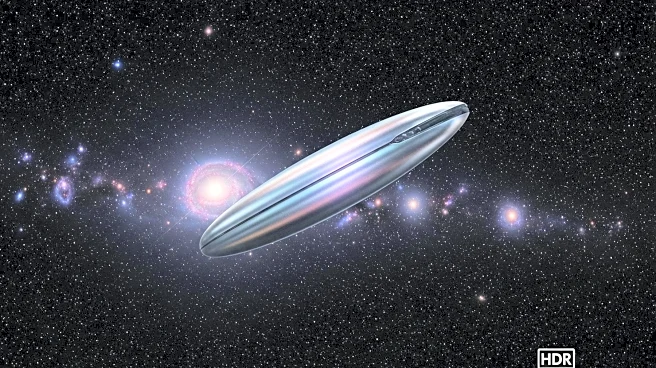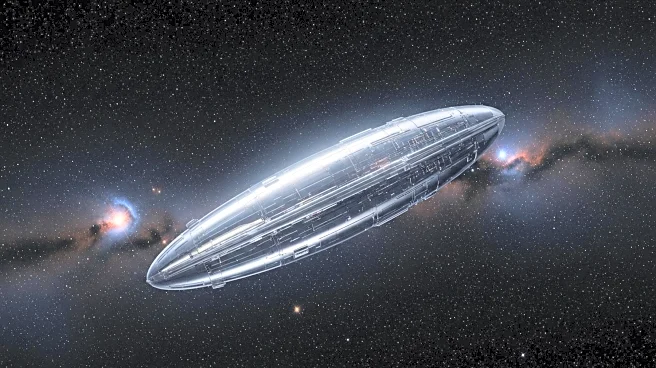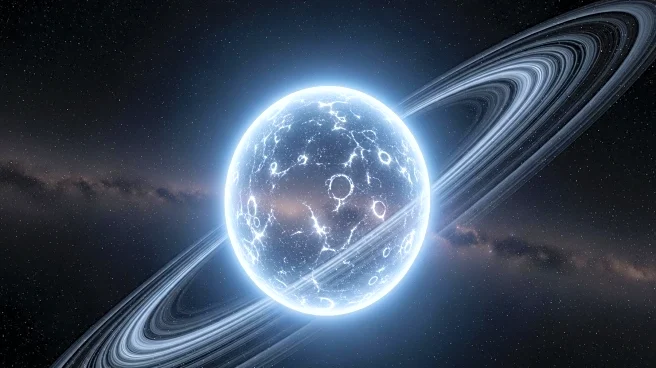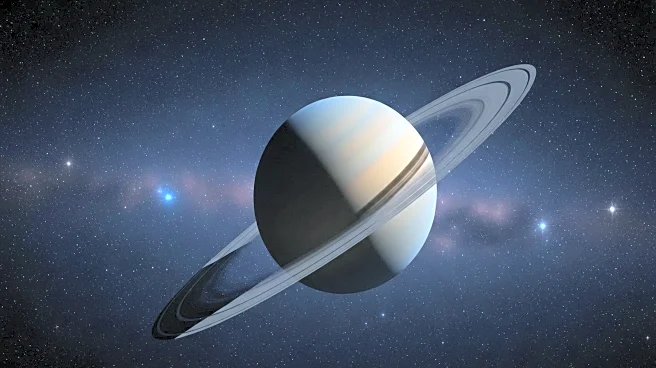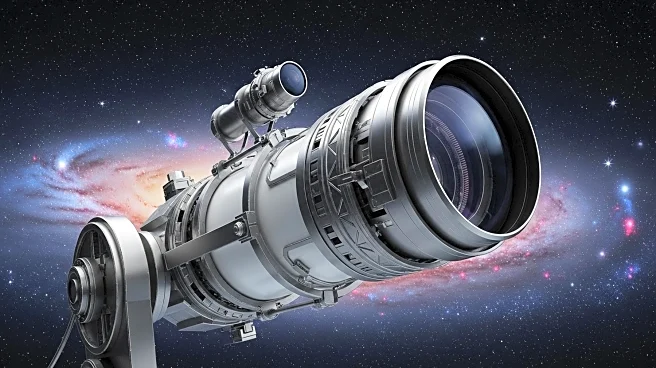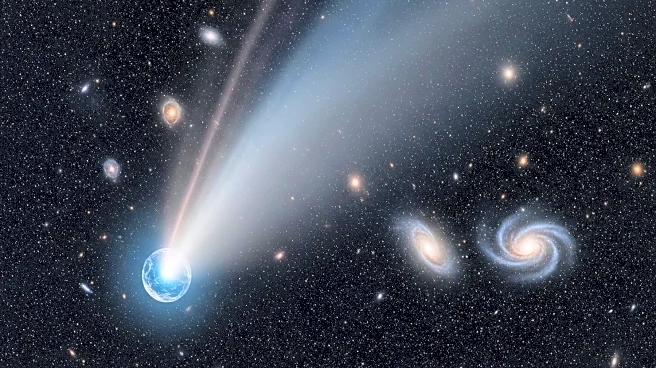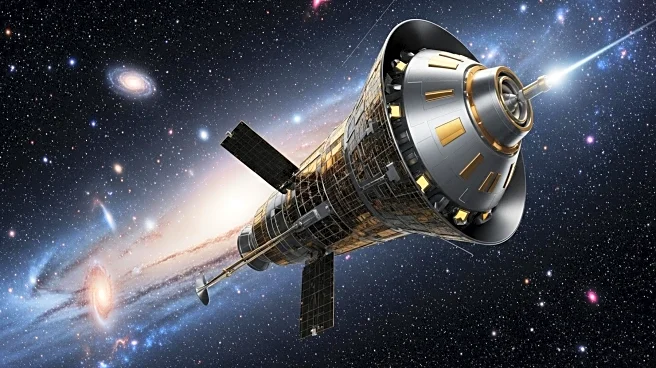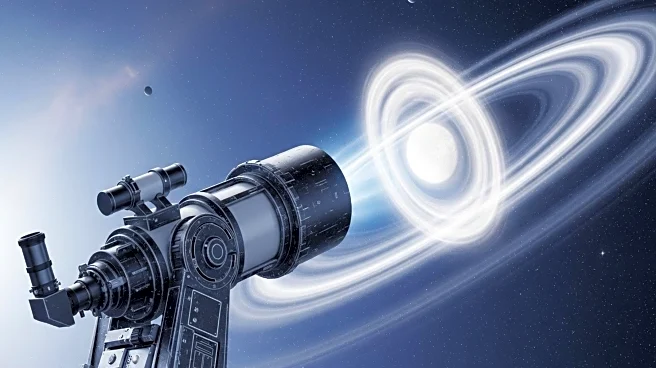What's Happening?
The interstellar object 3I/ATLAS, discovered on July 1, 2025, by the ATLAS survey telescope in Chile, is drawing significant attention from the scientific community. This object, with a nucleus estimated to be between 3 to 5 miles across and a mass of approximately 33 billion tons, is the third interstellar object identified, following 1I/ʻOumuamua and 2I/Borisov. It is set to pass closest to the Sun on October 30, 2025, at a distance of about 130 million miles, posing no threat to Earth. NASA and other international missions are conducting intensive observations to study its composition and trajectory. While some, like Harvard astrophysicist Avi Loeb, speculate about its potential artificial origin, most researchers consider it a natural comet.
Why It's Important?
The study of 3I/ATLAS is crucial for understanding interstellar objects and their origins. It provides an opportunity to gather data on objects from outside our solar system, which could offer insights into the formation and evolution of other planetary systems. The speculation about its artificial origin, although not widely supported, highlights the ongoing interest in the search for extraterrestrial intelligence. The findings from this study could refine our understanding of cometary behavior and contribute to the broader field of astrophysics by challenging existing models and encouraging new hypotheses.
What's Next?
As 3I/ATLAS continues its journey, it will remain a subject of study until it becomes unobservable in late September, re-emerging in December for further observations. Scientists will continue to analyze data from various telescopes and spacecraft to refine their understanding of its composition and trajectory. The results could influence future missions and the development of new technologies for studying interstellar objects. The scientific community will also monitor public interest and speculation, which could impact funding and support for related research initiatives.
Beyond the Headlines
The discovery and study of 3I/ATLAS underscore the importance of international collaboration in space exploration. It also highlights the role of advanced technology in detecting and analyzing distant celestial objects. The discussions around its potential artificial origin reflect broader cultural and scientific curiosity about the possibility of extraterrestrial life. This event may inspire future generations of scientists and contribute to a deeper appreciation of our place in the universe.


